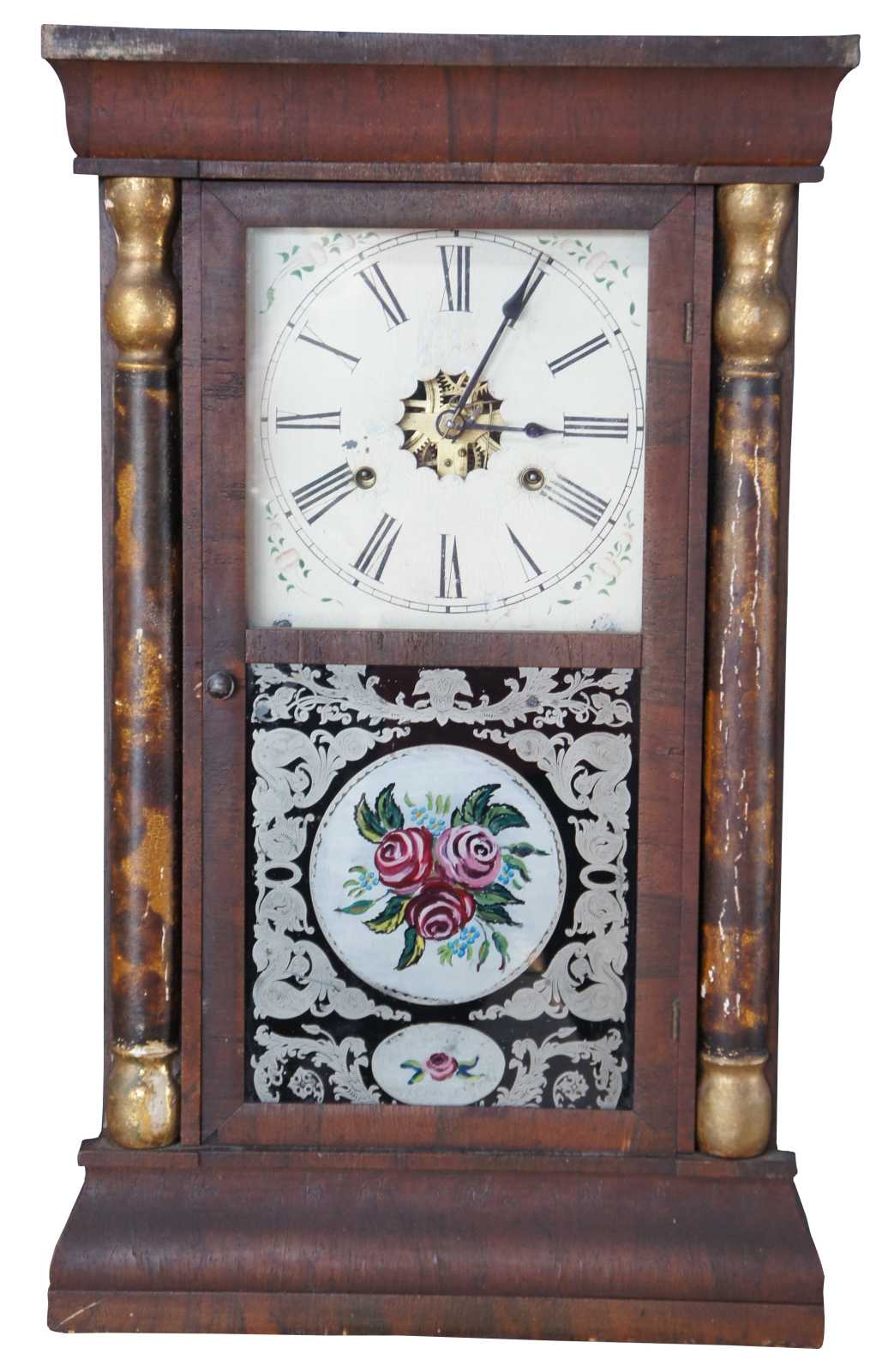
Shipping:
Free Shipping Included
Delivery:
Estimated 2-15 Business Days
Payments:
Credit Card, Check, Cash, PayPal, Apple Pay, Venmo
Returns:
30 Days 100% Money Back Guarantee, Buyer Pays Return Shipping
Description
Antique 19th century Gilbert (William) Manufacturing Company Ogee style weight driven American Empire shelf clock. Made of walnut featuring gold and marbled columns, reverse painted floral roses, roman numeral face and brass works. Signed and dated on back, this clock was one of the last made before the fire closed the factory and the reincorporated under a new name.
William L. Gilbert was born in 1806 in Northfield, CT (a village of Litchfield) and became interested in the booming clockmaking business at Bristol in 1828. In that year he and his brother–in–law George Marsh purchased a clock factory and formed the firm Marsh, Gilbert & Co. In 1835 Gilbert and John Birge formed Birge & Gilbert. In 1839 Gilbert became part of Jeromes, Gilbert, Grant & Co. to make the newly introduced 30 hour brass weight driven clock.
In 1840 Gilbert moved to Winsted, a village within Winchester, CT and with two partners bought the old Riley Whiting clock factory. (Clockmaking on this site had commenced in 1807. This may be the origin of the “1807” on the dial of many early 20th century Gilbert clocks.) They formed the firm Clarke, Gilbert & Co. in 1841 to make the 30 hour brass weight clock. In 1845 Gilbert’s partners sold out and the firm was renamed Wm. L. Gilbert & Co. In 1848 the firm became Gilbert & Clarke, and it again became Wm. L. Gilbert & Co. in 1851.
In 1866 a corporation called the Gilbert Manufacturing Co. was formed. In 1871 the major factory building was destroyed by fire and the company was dissolved. The William L. Gilbert Clock Co. was formed in 1871 but did not commence business until 1873. Their first catalog was issued in 1875, showing 37 models. Their 1881 catalog shows 162 clock models, of which 112 were of their own manufacture. An interesting feature of many Gilbert spring–driven wall and shelf clocks with visible pendulum is the wide pendulum swing, requiring a strong mainspring and thin suspension spring. In the latter part of the 19th century and early twentieth century, Gilbert offered most of the popular clock styles.
In 1930 A/C electric clocks were put on the market. About 1940 the production of wooden cased clocks and 8–day pendulum movements ceased. In 1957 the firm became the General–Gilbert Corporation, and in 1964 the clockmaking division was sold to Spartus Corporation.
Condition
Good antique condition, wear and distressing commensurate with age and use, finish loss, fading, crazing to face, working.
Dimensions
15" x 25" x 4.5"d